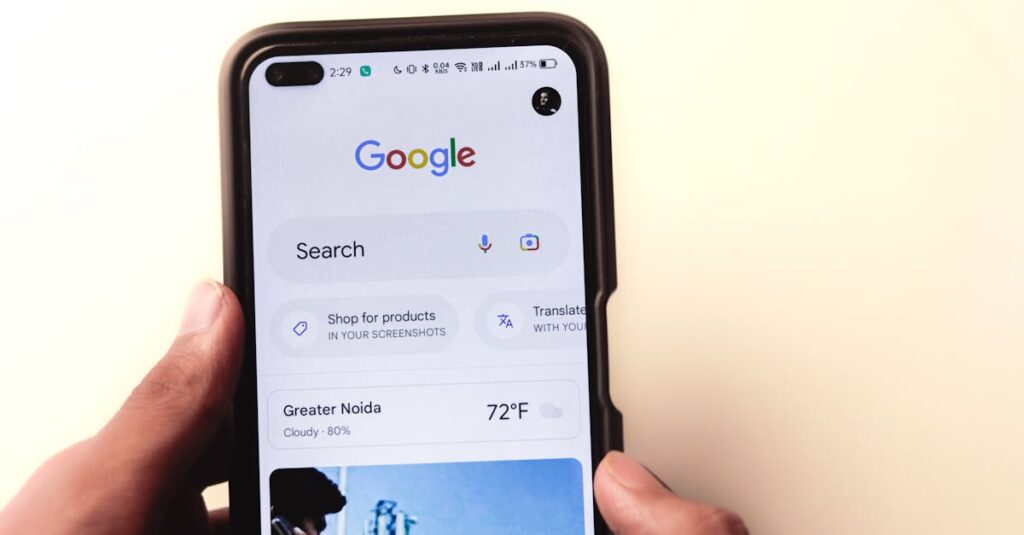In Q4, every business—no matter the size or niche—faces a make-or-break moment when it comes to winning more organic traffic. At Novah Media, we know that high rankings are only half the battle. To actually turn search engine views into valuable website clicks, your title tags and meta descriptions must do far more than simply exist: they need to stop the scroll and spark action. Let’s get real about what truly lifts your click-through rate (CTR) and how we approach this critical part of SEO with a strategic, human touch.

Why Title Tags and Meta Descriptions are Your First Impression (and Matter More Than You Think)
Your website’s first handshake with a potential customer often isn’t your homepage. It’s the snippet of text that appears in Google’s search results. Even if you rank at the top, a bland or unclear title can lead searchers to skip you for a competitor below. With fierce Q4 competition—especially in industries like retail and local services—making these small lines work for you isn’t optional, it’s essential. A well-written title and description can lift CTR by double digits, creating real revenue impact without rewriting your entire site.
The New Q4 Rules: Title Tag Optimization for 2025
Forget Pure Character Count—Think in Pixels and Impact
Google evaluates titles not by a fixed character count, but by pixel width. Titles should generally stay within 600 pixels on desktop and about 430 pixels for mobile. Practically, this means 45-70 characters—but more importantly, you should lead with your main keyword and core benefit in the first 350 pixels, so it doesn’t get cut off.
- Front-load key value: Place your top keyword and compelling hook right away.
- Make room for brand/location at end: Use remaining pixel width for your brand, local focus, or a time-sensitive hook like “2025” or “Q4 Special”.
- Check your work: Use simulators (such as SERPSim) to preview, but most importantly, test on real devices.
Structuring Title Tags: Unique and Actionable
- Every page needs its own unique title. Duplicates confuse Google (and your customers).
- Describe what’s truly on the page. Promise only what you deliver.
- Match the search intent: If your page is an informational guide, transactional landing page, or local service, the title should match.
- Use clear separators: Pipes (|), colons, or hyphens help break up information.
- Make it clickable: Ask yourself, “Would I click this if I saw it?”
Example: Digital Marketing Audit: Free 2025 Insights | Novah Media
Writing Meta Descriptions That Win Clicks in Q4
Think of your meta description as an invitation. It doesn’t directly influence rankings, but it absolutely impacts who clicks. For 2025 and beyond, we recommend:
- Naturally include target keywords. But never stuff or repeat awkwardly.
- Address a specific pain point or need: What problem are you solving? Make it tangible.
- End with a clear, active CTA: Examples include “Get a free audit,” “Download your guide,” or “Book now for Q4 benefits.”
- Keep it concise but informative: Aim for up to 300 characters, knowing Google may truncate around 150-170 on mobile.
Example description: Unlock business growth this quarter with Novah Media’s SEO and digital marketing expertise. Request your free audit today and see measurable improvements fast.

Our 6-Step Process for Optimizing Titles and Meta Descriptions
We take a proven, tailored approach to every client project. Here’s how we go deeper than plug-and-play templates:
-
Intent-Driven Keyword Research
We start by understanding what your audience is really searching for and identifying high-impact keywords that align with Q4 goals. Tools can assist, but nothing beats human insight into why someone clicks. -
Competitive SERP Analysis
Next, we review the top-ranking results for your main keywords. Are they emphasizing local trust, special offers, or expertise? We note what’s missing or what you can say better. -
Crafting Multiple Title Tag Prototypes
We don’t stop at one draft. Each primary page gets multiple options, which we review for keyword placement, pixel width, and emotional appeal. -
Composing Meta Descriptions That Sell (Without Hype)
Every description is written to answer, “Why you?” and close the click—whether the next step is reading a guide, booking a consult, or learning more. -
Preview and Test on Real Devices
We always check how titles and descriptions display across popular screen sizes. Truncated text is a wasted opportunity. -
Monitor, Measure, and Iterate
After launch, we track Google Search Console CTR data and A/B test further. Q4 is about smart iteration—even small changes can create compound returns.
Small Tweaks, Big Wins: Real-World Results from Our Experience
We’ve seen the impact of this process first-hand. For example, Golden Pet Salon worked with us to overhaul their service page SEO before Q4:
- Old Title: Dog Grooming Services | Golden Pet Salon
- New Title: Mesa’s Top Dog Grooming: Healthy, Happy Pets | Golden Pet Salon
- New Meta Description: Book Mesa’s trusted dog groomers for healthier, happier pets. See why local families love our quality, attention, and value. Secure your spot today!
The result? A boost in CTR from 4.9% to 6.5% in just weeks, translating directly into more client bookings—a 32% lift in engagement. This approach isn’t just for one business type or industry; it applies across retail, services, and local businesses.

Best Practices for Q4 2025: How to Get Ahead
- Incorporate timely hooks: Include mentions of “2025,” “Q4,” or your local area for added relevance and urgency.
- Absolutely avoid duplicates: Every important page—product, service, or blog—should offer a unique perspective in its snippet.
- Set a quarterly review rhythm: Algorithms shift fast. Block time each quarter to evaluate and update your meta data (not just annually).
- Be truthful and authentic: Never overpromise or bait-and-switch with your titles/descriptions—Google may penalize, and users won’t trust you.
For a deeper look at overall strategies, we recommend our 10 Fast Ways to Stand Out Online Before Black Friday and our guide to Standing Out in a Crowded Digital Marketing Landscape.
FAQs on Title Tags & Meta Descriptions
- How often should I update my page titles and meta descriptions? Ideally, review them quarterly, especially before big sales periods or product launches.
- Can I just stuff keywords for SEO? No. Keyword stuffing looks unnatural and can hurt CTR and rankings. Place keywords logically and focus on readability.
- Should I use the same meta description for multiple pages? Never. Unique, descriptive copy outperforms templates every time.
Bringing It All Together for Q4 Success
If you want to stop losing potential customers in the search results and start converting those precious impressions, now’s the time to make your title tags and meta descriptions work harder. With strategic updates, real empathy for what your audience needs, and a data-driven process, you’ll be positioned for Q4 growth and beyond.
If you’re ready for a partner to guide this process, analyze your starting point, and help you unlock measurable gains, let’s have a conversation. At Novah Media, we don’t just talk about digital marketing, we deliver it—with a people-first approach and an eye for every detail from ranking to real ROI.

